Home Improvement Living in Texas
How Many Solar Panels Do You Need in Texas?
4 minute readHow to calculate the number of solar panels you need to power your Texas home
Home > BKV Energy Blog > All Posts > Your Guide to Wind Turbines for Homes
5 minute read • Last update July 2025
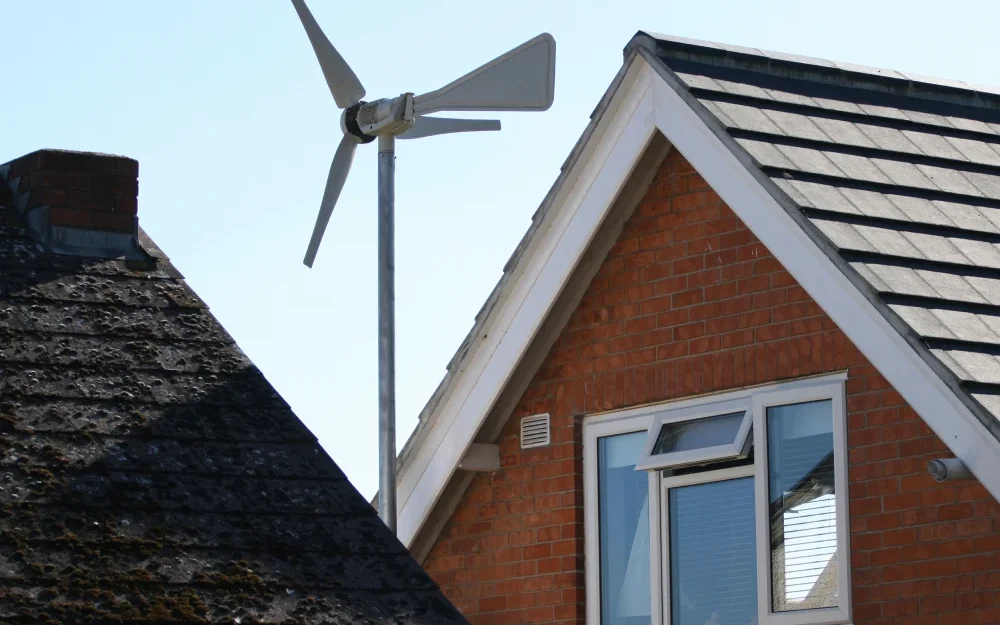
Wind power generation for home use is rapidly gaining popularity among homeowners who are looking for sustainable and cost-effective energy solutions. Harnessing the power of wind for your home not only reduces reliance on traditional power grids but also contributes to creating a greener and more environmentally friendly ecosystem.
By installing wind turbines or wind energy systems, homeowners can tap into a renewable energy source that is abundant, clean, and abundant in nature. Here’s what you need to know before joining the growing movement toward a cleaner and more sustainable future with wind energy for your home.
There are two main categories of wind turbines suitable for residential use, each with its unique design and power generation capabilities. The most common types of wind turbines include:
The most common type of wind turbine used for home power generation is the Horizontal-Axis Wind Turbine (HAWT). These turbines have the main rotor shaft and electrical generator at the top of a tower, and they must be pointed into the wind. Small turbines are pointed by a simple wind vane, while large turbines generally use a wind sensor coupled with a servo motor. HAWTs have a design that is efficient and well-suited for higher wind speeds.
An alternative wind turbine design is the Vertical-Axis Wind Turbine (VAWT), which operates independently of the wind direction. VAWTs are less frequently used but can be more practical in residential areas where wind conditions are variable, and space is limited. They are easier to maintain since their moving parts are accessible at ground level, and they are quieter in operation, making them neighbor-friendly.
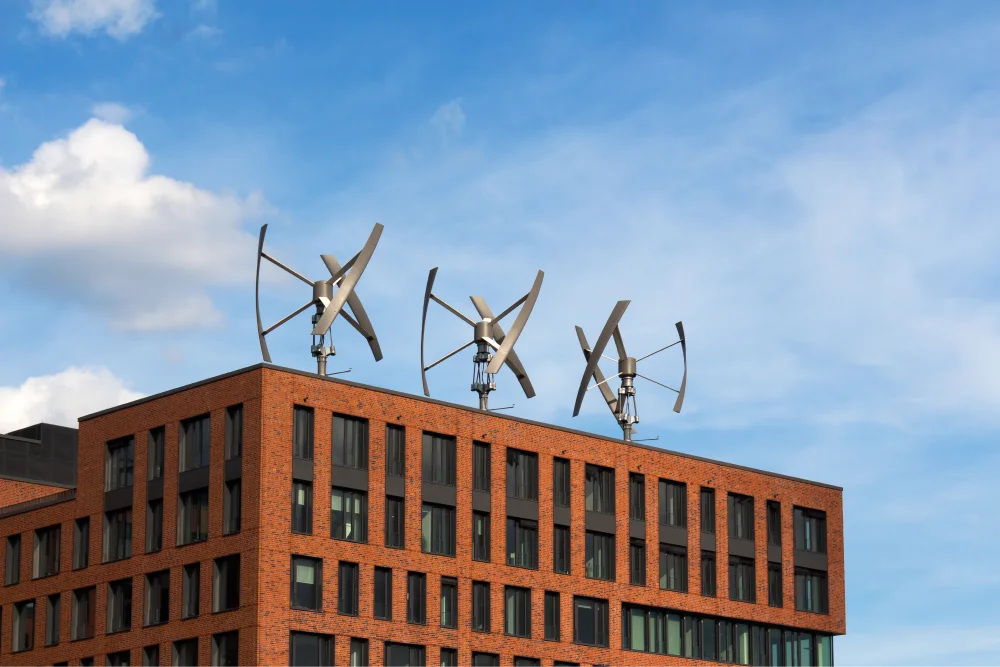
There are several types of wind turbines suitable for installation on a residential property.
Rooftop wind turbines are a form of wind power generation for homes that can be installed on the roof of a residential building. These turbines are designed to capture wind energy in urban or suburban environments. While they don’t usually generate as much power as pole-mounted turbines, they can be a good supplement to a home’s energy needs, especially in windy areas.
Small wind electric systems are a type of windmill energy for homes that can be used to generate electricity where there is a sufficient wind resource. These systems can be connected to the electric grid through your power provider or stand-alone systems (off-grid). They are particularly useful in remote locations where other forms of power generation are not viable.
Innovation in wind technology has led to the development of alternative wind turbines that differ from traditional designs. These include bladeless wind turbines that use vibrations to generate power and compact turbines designed for the urban environment. These novel designs often focus on reducing the turbine’s visual impact and the noise it generates, making them suitable for residential areas.
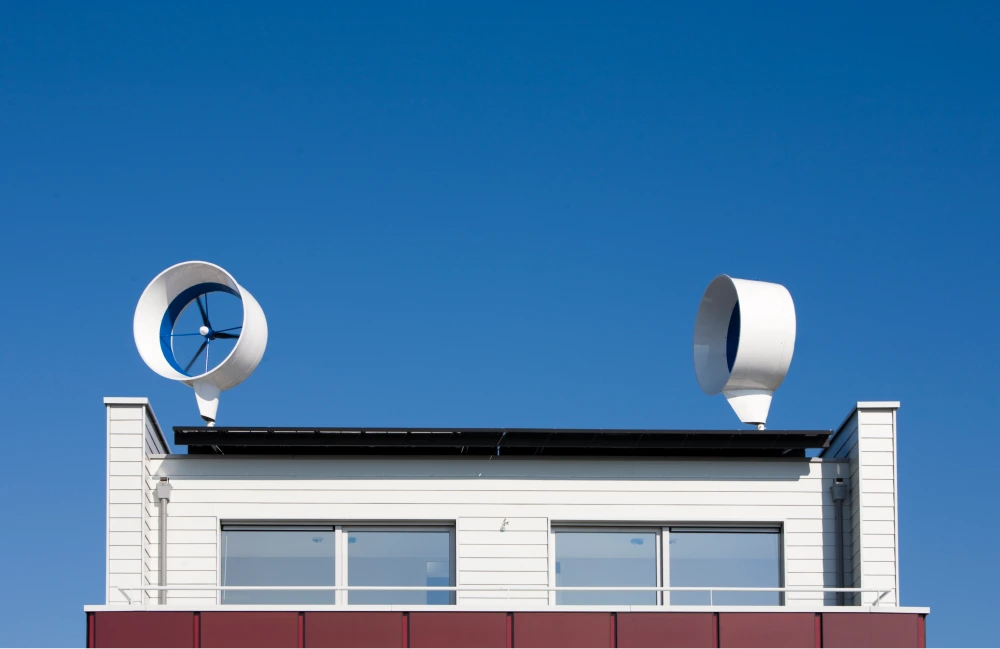
Once you’re aware of the different types of wind turbines, it’s essential to evaluate the following:
The amount of wind your location receives is critically important when considering the installation of a small-scale wind power system. For optimal efficiency, it is recommended that the wind speed at your location should be at least 10 miles per hour. This ensures that the system functions effectively and harnesses the maximum amount of wind energy available. By taking into account the specific wind conditions in your area, you can make informed decisions to maximize the output and effectiveness of your wind power system.
Before proceeding with any construction project, it is highly advisable to check with the local authorities regarding zoning regulations, permits, as well as neighborhood covenants. Keep in mind that certain areas may have specific restrictions on the allowable height of structures. By conducting due diligence and obtaining the necessary information, you can ensure compliance and avoid any potential legal complications in the future.
To accurately gauge the appropriate size of the turbine you require, it is crucial to assess your household energy consumption. When you carefully analyze the specific energy needs of your home, including factors such as daily electricity usage, the number of appliances, and overall energy demand, you can make an informed decision about the ideal turbine size that will effectively meet your power requirements.
When considering wind turbines, it is important to explore the wide range of available options. These turbines are available in various sizes and come with different price tags. It is crucial to analyze and ensure that the cost of the chosen wind turbine aligns perfectly with your budget. Additionally, it is beneficial to take into account the long-term energy savings that you anticipate. By carefully evaluating these factors, you can make an informed decision and choose the wind turbine that best suits your needs and goals.
By adopting wind power generation for home use, homeowners can significantly reduce their carbon footprint. Wind energy is clean, renewable, and produces no greenhouse gas emissions during operation, making it an environmentally friendly alternative to fossil fuels.
While the initial setup cost for a wind turbine can be substantial, the long-term savings on energy bills can be significant. With the lifespan of a wind turbine averaging 20-25 years, homeowners can enjoy reduced utility costs for many years, making it a sound investment.
Many regions offer incentives, rebates, or tax credits for installing renewable energy systems, including wind turbines. These financial incentives can help offset the initial investment costs and accelerate the return on investment for homeowners.
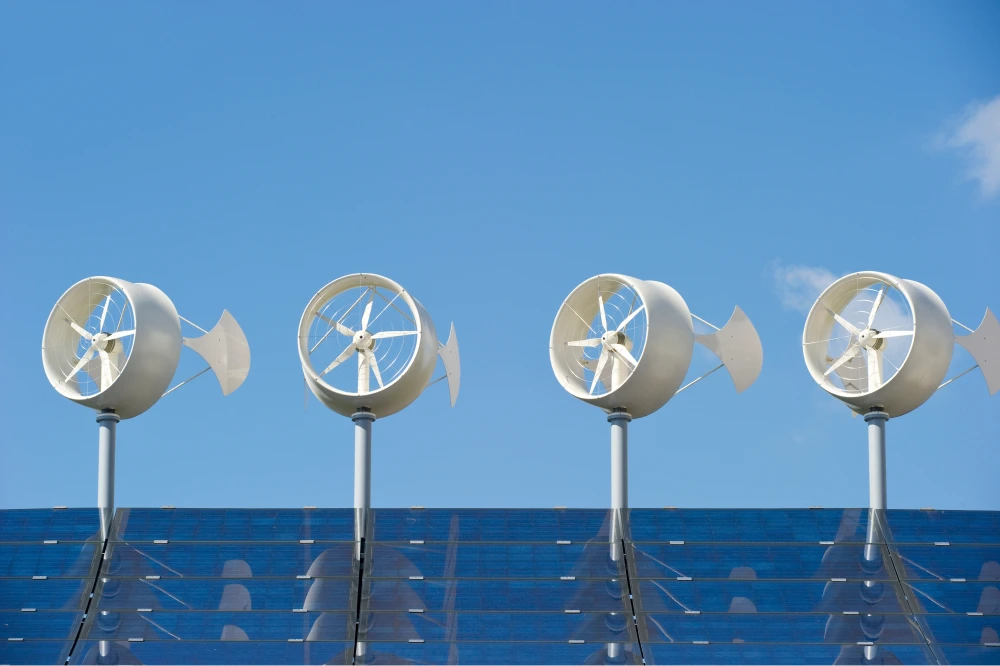
When it comes to windmill energy for homes, innovation has led to a variety of alternative designs that challenge the traditional large-blade turbines. These alternatives are not only designed to be more aesthetically pleasing but also to address some of the challenges associated with conventional windmills, such as noise, wildlife impact, and space requirements.
Bladeless wind turbines are a revolutionary design that eliminates the need for rotating blades. These turbines harness wind energy through oscillation without the typical rotating motion, which means fewer moving parts, lower maintenance, and minimal noise. This makes them an excellent option for residential areas where noise and space are significant concerns.
Another alternative design is the vertical spiral turbine, which features a twisted blade structure. This design allows it to capture wind from all directions and tends to be more compact, making it suitable for residential environments where space is at a premium.
Micro wind turbines are small-scale turbines that can be used in both urban and rural settings. They are designed to work in lower wind conditions and can be installed on rooftops, balconies, or small yards. Their small footprint makes them an ideal alternative for personal wind power generation in homes with limited space.
Alternative wind turbines can often be integrated into existing home energy systems. They can complement solar panels or work as standalone generators, depending on the homeowner’s energy needs and the local climate. Smart technology can also be used to optimize energy output and consumption, ensuring that the power generated is used effectively.
Graham Lumley, Digital Marketing Manager at BKV Energy, leads digital and traditional marketing strategies, focusing on educating Texans about the state's deregulated energy market. With over 8 years of marketing experience, he creates content to help consumers understand and save on their energy bills, bringing a fresh and dynamic approach to the industry.
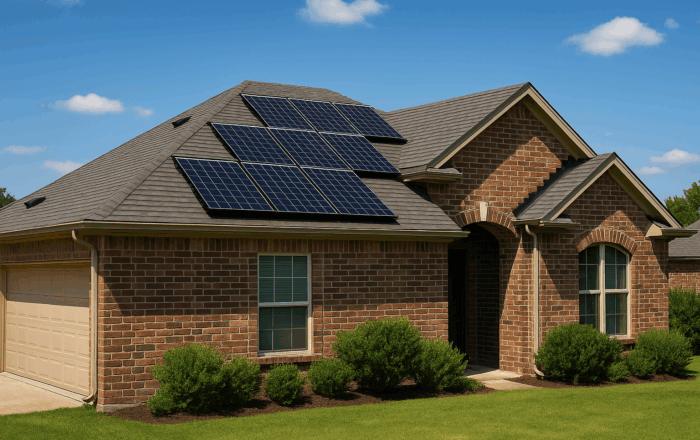
Home Improvement Living in Texas
How to calculate the number of solar panels you need to power your Texas home

Gardening in Texas presents unique challenges. Long, hot summers and frequent droughts mean that traditional landscaping often requires significant water
Get $50 off your electric bill!
Use code BKVEJOINUS50
Enter your zip code to shop BKV Energy's affordable, fixed-rate Texas electricity plans. Use the promo code for $50 off your electric bill.